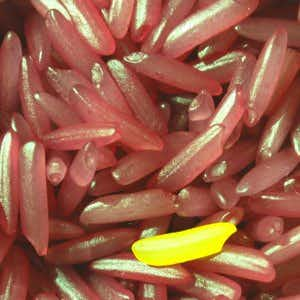
One of the pillars of heart disease prevention is keeping blood fats, especially cholesterol, under control. But doctors don’t always agree on the best way to achieve this goal. Most recommend a healthful diet (though they don’t all agree on what that looks like) and plenty of exercise. Many physicians also prescribe statin-type drugs to lower cholesterol, but some patients prefer the natural statins in red yeast rice. But what about the risk of red yeast rice? Might this supplement cause muscle pain and weakness as lovastatin or simvastatin can? Some people have found that it causes unpleasant gastrointestinal side effects.
Red Yeast Rice Led to Digestive Distress:
Q. I read with interest your response to a reader who suffered adverse abdominal effects from taking red rice yeast to lower cholesterol. I had the same issue. I discovered the supplement I was taking contained capsaicin to improve absorption. It caused tremendous gastric issues. To my dismay, I can no longer take any supplement that contains this one ingredient. However, I can take red yeast rice without it and get positive results with no problems.
Use of Red Yeast Rice:
A. When the yeast Monascus purpureus acts on rice, the result is red yeast rice (RYR). This product has been used in traditional Chinese medicine for centuries to improve circulation and restore balance (Frontiers in Pharmacology, Dec. 1, 2019).
Chemists have identified more than 100 constituents, including some that are identical to certain statin drugs. That probably explains why people take RYR to lower cholesterol (Frontiers in Pharmacology, Jan. 17, 2022).
An umbrella review of meta-analyses concluded that red yeast rice preparations are safe, by and large, although better studies are needed (Journal of Integrative Medicine, Feb. 2, 2024). It is important for manufacturers to pay attention to quality, however. The Kobayashi Pharmaceutical has just recalled three products containing “beni koji,” the Japanese version of red yeast rice. More than 100 people became ill and at least five died after taking the products. The company is investigating the possibility that a toxic compound made by blue mold, puberulic acid, might be responsible.
What Is Capsaicin?
Capsaicin, the compound that supplies the “heat” in hot peppers, can cause digestive tract irritation and diarrhea in some individuals (Molecular Medicine Reports, March 2024). We have not seen it used to increase absorption. Some earlier research suggested just the opposite effect (Food and Chemical Toxicology, March 2013). In this study, rats given capsaicin along with simvastatin, a cholesterol-lowering drug similar to red yeast rice, had lower blood levels of the statin than rats given simvastatin alone.
To learn more about red yeast rice and other approaches to reducing blood lipids, you may wish to consult our eGuide to Cholesterol Control and Heart Health.
One Reader’s Story:
Q. I have been taking red yeast rice for several years. I had read it can bring cholesterol down and I thought that would be useful.
A few weeks ago my legs began aching at night, especially my left hip. I am 72 years old, in good health, not overweight, exercise regularly and take no prescribed medications.
I am wondering if the red yeast rice could suddenly begin causing such symptoms. I have not experienced any injury to cause this discomfort.
I have taken ibuprofen a couple of times to alleviate the aching at night, but I would rather not. Do you think red yeast rice is causing this problem?
Uncovering the Risk of Red Yeast Rice:
A. It is certainly possible that you have developed a reaction to red yeast rice. Although this natural source of statin compounds is less likely to trigger muscle pain than the pharmaceutical statins, some people are sensitive to it (Xue et al, BMC Cardiovascular Disorders, May 18, 2017; Venhuis et al, Drug Testing and Analysis, Mar-Apr. 2016).
You may have become more susceptible to this side effect as you have grown older. As people age, they seem to suffer more from statin-associated muscle symptoms (Khine et al, American Heart Journal, Sep. 2016).
Learn More:
We have more information on the benefit and risk of red yeast rice as well as other natural approaches for controlling cholesterol and triglycerides in our book, Quick & Handy Home Remedies.
Citations
- Zhu B et al, "Red Yeast Rice: A systematic review of the traditional uses, chemistry, pharmacology, and quality control of an important Chinese folk medicine." Frontiers in Pharmacology, Dec. 1, 2019. DOI: 10.3389/fphar.2019.01449
- Li P et al, "Red Yeast Rice for hyperlipidemia: A meta-analysis of 15 high-quality randomized controlled trials." Frontiers in Pharmacology, Jan. 17, 2022. DOI: 10.3389/fphar.2021.819482
- Ma Z-Y et al, "Associations between the use of red yeast rice preparations and adverse health outcomes: An umbrella review of meta-analyses of randomized controlled trials." Journal of Integrative Medicine, Feb. 2, 2024. DOI: 10.1016/j.joim.2024.01.008
- Zhang W et al, "Pharmacological activity of capsaicin: Mechanisms and controversies (Review)." Molecular Medicine Reports, March 2024. doi: 10.3892/mmr.2024.13162

